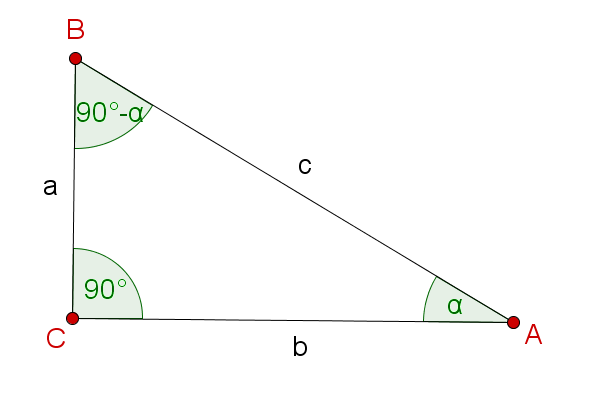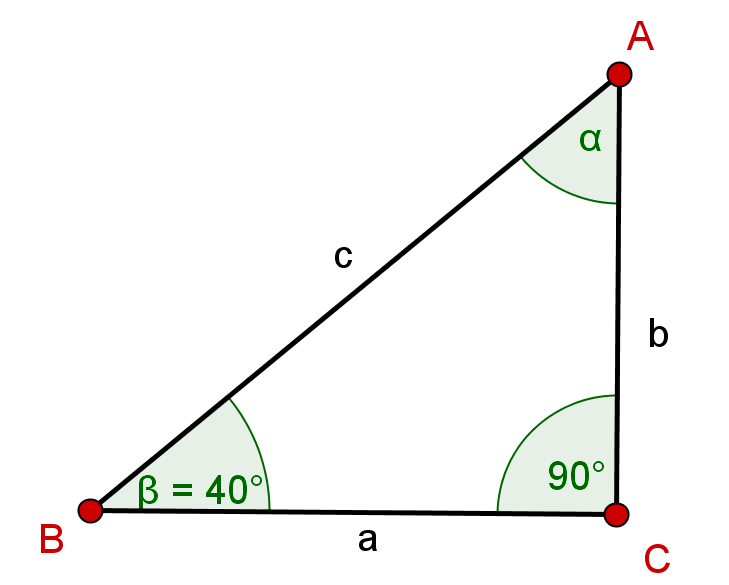Complement relationships
sin(90°−α)=hypotenuseopposite cathetus=cb
cos(α)=hypotenuseadjacent cathetus=cb.
Hence,sin(90°−α)=cos(α).
The other equations can be explained in the same way.
Example
Consider the given triangle. Calculate cos(α) in the same way as above.
With the complement relation you can equate cos(α) and sin(90°−α).
cos(α)=sin(90°−α)
Because of the sum of the interior angles, the following equation applies.
sin(90°−α)=sin(β)
Insert the value of β, calculate the result and round it to 2 decimal places.
sin(β)=sin(40°)≈0.59.
Therefore, cos(α)≈0.59.
Supplement relationships
| | |
|---|
sin(180°+α)=−sin(α) | cos(180∘+α)=−cos(α) | tan(180∘+α)=+tan(α) |
sin(180°−α)=+sin(α) | cos(180°−α)=−cos(α) | tan(180∘−α)=−tan(α) |
sin(360∘−α)=−sin(α) | cos(360∘−α)=+cos(α) | tan(360∘−α)=−tan(α) |
Visualization
sin(180°+α)=−sin(α) and cos(180°+α)=−cos(α) can be tested, here


